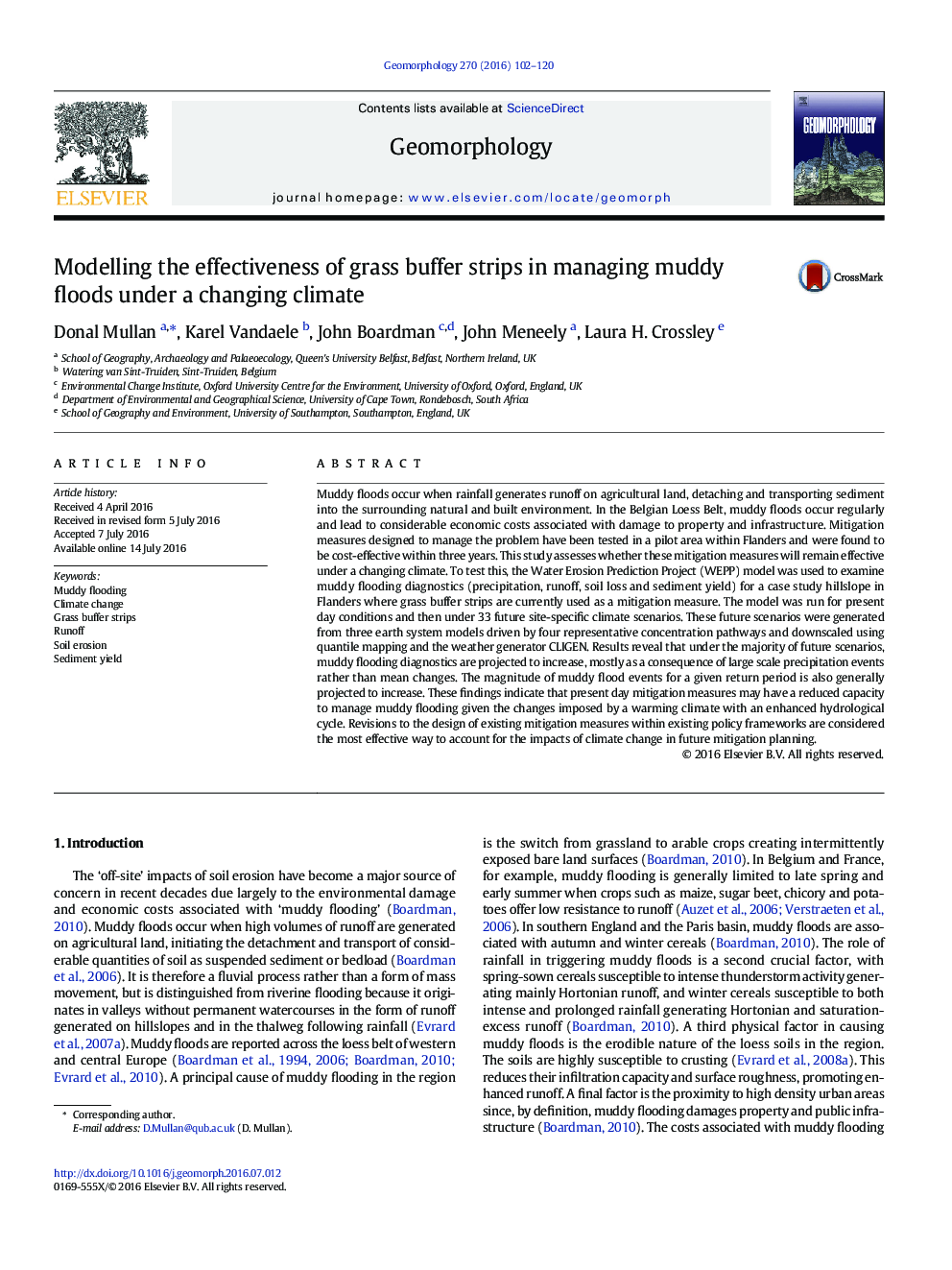| کد مقاله | کد نشریه | سال انتشار | مقاله انگلیسی | نسخه تمام متن |
|---|---|---|---|---|
| 4683897 | 1635379 | 2016 | 19 صفحه PDF | دانلود رایگان |
Muddy floods occur when rainfall generates runoff on agricultural land, detaching and transporting sediment into the surrounding natural and built environment. In the Belgian Loess Belt, muddy floods occur regularly and lead to considerable economic costs associated with damage to property and infrastructure. Mitigation measures designed to manage the problem have been tested in a pilot area within Flanders and were found to be cost-effective within three years. This study assesses whether these mitigation measures will remain effective under a changing climate. To test this, the Water Erosion Prediction Project (WEPP) model was used to examine muddy flooding diagnostics (precipitation, runoff, soil loss and sediment yield) for a case study hillslope in Flanders where grass buffer strips are currently used as a mitigation measure. The model was run for present day conditions and then under 33 future site-specific climate scenarios. These future scenarios were generated from three earth system models driven by four representative concentration pathways and downscaled using quantile mapping and the weather generator CLIGEN. Results reveal that under the majority of future scenarios, muddy flooding diagnostics are projected to increase, mostly as a consequence of large scale precipitation events rather than mean changes. The magnitude of muddy flood events for a given return period is also generally projected to increase. These findings indicate that present day mitigation measures may have a reduced capacity to manage muddy flooding given the changes imposed by a warming climate with an enhanced hydrological cycle. Revisions to the design of existing mitigation measures within existing policy frameworks are considered the most effective way to account for the impacts of climate change in future mitigation planning.
Journal: Geomorphology - Volume 270, 1 October 2016, Pages 102–120
